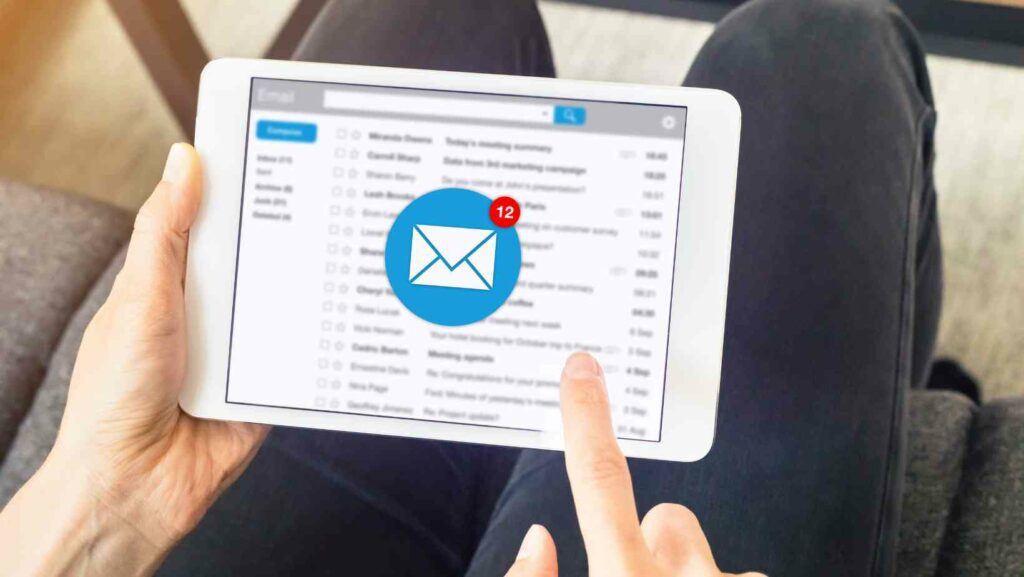Are you confident that your email campaigns have reached the inboxes of your target audiences successfully?
Business owners are spending thousands on email marketing tools and hiring email marketing strategists to ensure their campaigns are effective.
And, of course, to increase their lead conversions.
Approximately 49 percent of global emails were recognized as spam.
Around 53% of emails are actually read, indicating that recipients, on average, devote at least 8 seconds to viewing the message.
So, how to achieve your expected result?
Today, you will not just learn the factors that cause deliverability issues,
But, you will also uncover the best strategy on how to counter these factors.
#1 Bad IP Reputation
The reputation of an IP address revolves around assessing its reliability and trustworthiness based on past actions and behaviour.
Different organisations, such as Internet Service Providers (ISPs) and email service providers, maintain databases that monitor the reputations of IP addresses.
These reputations assist in estimating the likelihood of an IP address being associated with spam, harmful activities, or any other undesirable behaviour.
Take a look at these seven facts that explain how positive IP reputation functions:
- A positive IP reputation increases the chances of your emails being delivered directly to recipients’ inboxes.
- Receiving mail servers are more likely to trust and prioritize emails from reputable IP addresses.
- If your IP address has a poor reputation or is listed on email blacklists, it increases the likelihood of your emails being flagged as spam and diverted to the recipients’ spam or junk folders.
- If you send large emails, your IP reputation becomes even more critical.
- High bounce rates, which occur when emails cannot be delivered to the intended recipients, can negatively impact IP reputation.
- Consistent sending emails to invalid or non-existent email addresses can signal poor list hygiene and affect your IP reputation.
- If your emails consistently generate positive engagement signals, it can enhance your IP reputation and improve email deliverability.

#2 Unsegmented Email
Email segmentation is the process of splitting an email list or subscriber base into smaller, more focused groups according to particular criteria or characteristics.
It entails classifying subscribers into segments to generate email campaigns that are tailored and pertinent to each group.
Proper email segmentation can boost the Customer’s Lifetime Value.
Here are the simplified explanations of how email segmentation works:
- Email segmentation helps you send personalized emails to specific groups of people.
- Customizing the content to match each group’s interests makes your emails more relevant.
- It also lets you control how often and how many emails you send to each group.
- Segmentation helps identify inactive subscribers, and you can monitor deliverability for each group separately.
- Email segmentation can help you to strategize your email campaign analytics easily.
Email segmentation offers the advantage of ensuring your messages reach the intended recipients accurately.
To ensure your messages reach the intended recipients, consider the following factors:
- Avoid segmenting based on a single criterion.
- Don’t ignore data hygiene.
- Avoid over-segmenting your list.
- Don’t forget to test and measure the results.
- Avoid treating segments as static.
- Don’t send generic content.
- Don’t rely only on demographics.
#3 Using public email domain
How do you feel when you receive a random email from strangers?
A staggering 92% of organizations have experienced the consequences of a successful phishing attack.
That’s absolutely alarming!
And that explains why some people will just delete, skip, and mark emails as spam.
What’s worse? There is a high chance that your email will be reported.
Unfortunately, this behaviour can’t be totally eradicated because people are more vigilant nowadays.
But, you can still improve your email deliverability by not using a public email domain.
You want your email to represent your business and clearly communicate who you are and what you do.
Every time that you send your marketing email to your target audience, you also want to increase your brand image.
That’s the primary reason you should not use public email for your business.
Using a public domain email address for your business might make some customers worried about their privacy.
By switching to a custom domain email, you can address these concerns and give them peace of mind about the security of their information.
Public domain providers are more prone to hacking attempts and security breaches, putting your business’s sensitive data and communication at risk.

#4 Content Relevance
Email service providers (ESPs) and internet service providers (ISPs) employ complex algorithms and spam filters to evaluate incoming emails.
These filters assess various factors, including the content of the email, to determine whether it’s relevant and legitimate or spam.
Relevant content that aligns with the recipient’s interests and expectations is more likely to pass through these filters.
ISPs also consider user engagement signals, such as open rates, click-through rates, and email replies, to determine the relevance and value of your emails.
If your content is relevant to your recipients, they are more likely to engage with it, resulting in higher open and click-through rates.
Positive engagement signals indicate that your emails are wanted and valuable, increasing the chances of your future messages reaching the inbox.
Delivering personalized and targeted content to your subscribers increases relevance.
Personalization helps you provide value to your subscribers, increasing the likelihood of your emails being delivered and engaged with.
ISPs maintain sender reputation systems that assign a sender score to each sender based on their email practices, including content relevancy.
Your sender reputation improves if your emails consistently receive positive engagement, have relevant content, and comply with industry best practices.
A good sender score positively influences deliverability, as ISPs consider reputable senders more trustworthy and relevant.
Avoid using a links shortener or URL shorteners.
The reputation of certain URL shorteners can suffer due to misuse or spamming.
When a link is connected to a disreputable URL shortener, it has the potential to harm email deliverability.
Below are examples of frequently encountered spammy words and phrases:
- FREE
- Urgent or Act Now
- Guaranteed
- Congratulations, or You’ve Won
- Limited Time Offer
- Cash, Earn Money, or Get Rich Quick
- Excessive use of exclamation marks or all capital letters
- Misleading subject lines
It’s important to note that while these words and phrases are commonly associated with spam, it doesn’t necessarily mean you should avoid them entirely.
Instead, exercise caution when using them.
Keep in mind that multiple factors influence email deliverability.
So it’s advisable to optimize your emails by taking these factors into consideration and adapting your content accordingly.
#5 Missing SPF, DKIM, and DMARC
SPF, DKIM, and DMARC are like trusted guardians that help ensure emails are really from who they say they’re from.
These three authentication methods are super important in keeping spam, phishing attacks, and other email security risks at bay.
They work together to make sure your inbox stays safe and secure!
They’re like the ultimate trio of protectors, ensuring that only genuine emails make their way to your inbox.
If domains haven’t properly configured SPF, DKIM, and DMARC, they might encounter issues where their emails end up quarantined as spam or fail to reach the intended recipients
This is a situation you definitely want to steer clear of!
SPF functions by enabling domain owners to designate approved mail servers.
Upon receiving an email, the SPF record is examined to verify the authorization of the sending server.
This process aids in preventing email spoofing and unauthorized impersonation of senders.
DMARC is a protective measure against email spoofing and phishing attacks while providing reporting and monitoring capabilities for domain owners.
DomainKeys Identified Mail (DKIM) operates like a distinctive “signature” for emails.
It allows domain owners to include a digital signature in their emails, ensuring their trustworthiness.
This clever signature employs advanced mathematics and cryptography to verify that the email truly originated from the claimed domain.
It’s comparable to having a personal seal of genuineness for your emails!

#6 Email Timing
Approximately 7.1% of the emails are open between 9 a.m. and 10 a.m. in the United Kingdom.
Sending an email when the recipient is likely to be actively checking their inbox is a great way to get their attention.
It’s also helpful to send the email when the content is most relevant to their current situation or needs, as it can have a bigger impact.
If you’re rushing to the office and trying to avoid being late, it’s likely that you won’t want to open an e-commerce email.
So, when deciding on the best time to send your email, take into account the nature of your product or service.
This way, you can ensure that you reach your audience at the most suitable moment.
To improve your chances of getting a quick response, try sending the email when the recipient is likely to be less busy or swamped with other tasks.
It’s best to avoid busy periods like Monday mornings or Friday afternoons, as that can work in your favor.
If you’re communicating with people in different time zones, it’s important to consider the time difference.
Sending the email at a convenient time for their time zone improves the likelihood of them being available and engaged when they receive it.
When sending an email campaign, use an email marketing tool with time zone orientation.
Getting the timing right is vital when it comes to follow-up emails or reminders.
Sending a follow-up too early might be seen as pushy while waiting too long could result in missed opportunities or deadlines.
Striking the right balance and sending timely reminders significantly increases the likelihood of getting the desired response or action.
It’s important to remember that timing can indirectly impact email deliverability.
Sending a large volume of emails all at once might trigger spam filters or raise suspicions of potentially suspicious activity.
#7 Spam Filter
Spam filters are designed to identify and block unsolicited or unwanted emails, commonly known as spam.
These filters use various techniques to determine whether an incoming email is spam or legitimate.
The spam filter scans the email’s content, subject line, attachments, and embedded links to detect patterns commonly associated with spam emails.
It is essential to ensure that your email is well-crafted.
Take a look at the list of phrases that might be flagged as spam in the previous paragraph “Content Relevance”.
Just to emphasize this…
it doesn’t necessarily mean you should avoid them entirely.
Harness your writing creativity to overcome these challenges.
The spam filter also considers the behavior of the recipient.
If the recipient consistently marks emails from a particular sender as spam or moves them to the junk folder, the filter may learn to treat similar emails as spam in the future.

#8 Email Bounces
An email bounce occurs when an email fails to reach its intended recipient and is “bounced” back to the sender.
Bounces can transpire due to various reasons.
If the email address you’re attempting to send to doesn’t exist or is invalid, the email server will generate a bounce message to indicate the failure.
Similarly, if the recipient’s mailbox is full and cannot receive new messages, the email server will bounce the email back.
Temporary technical issues with the recipient’s email server or network can also result in email bounces.
Occasionally, the recipient’s email server may block incoming emails from specific senders or, based on certain criteria, cause the email to bounce.
Let’s explore the different types of email bounces and learn how to address each one.
Hard Bounce
If an email cannot be delivered because the recipient’s email address is invalid, non-existent, or blocked, it is referred to as a hard bounce.
This can also happen if the email provider blocks the sender’s email address.
Hard bounces can pose challenges for businesses as they signal underlying issues with the quality of the email list, potentially impacting their sender’s reputation.
So, what causes hard bounce?
- Invalid or Non-Existent Email Address
- Domain name issues
- Anti-Spam or Email Blocked Measures (usually used by the government)
Unfortunately, a hard bounce email cannot be resolved.
It occurs when an email fails to reach the recipient’s email address due to a permanent error.
Soft Bounce
When a server temporarily rejects an email, it is referred to as a soft bounce.
This indicates a temporary issue, and the majority of email services attempt to resend the email messages after encountering a soft bounce.
What are the reasons behind a soft bounce?
- The recipient’s mailbox capacity may be reached, inhibiting the delivery of new emails.
- Temporary issues with the recipient’s email server could also be a factor.
- If the email surpasses the recipient’s mailbox size or the attachment size limit set by their email server, it can lead to a soft bounce.
- If the recipient has configured an auto-reply or vacation message, it can result in a soft bounce.
Absolutely! You can definitely address a soft-bounce email problem.
This usually happens due to a temporary glitch with their email server or mailbox.
Hence, it is necessary to resolve soft bounces on the receiving mail server’s end.
These factors might be stressing you out, but this blog has provided quick and easy ideas on improving your email deliverability.
Improve your email deliverability with the right tool.
With a busy schedule managing other aspects of your business, it’s challenging to oversee your email deliverability.
Fortunately, this is no longer a concern in today’s world, thanks to the abundance of email marketing tools available to assist you.
Nonetheless, it is crucial to select the appropriate tool that offers the specific services you require.
Easy Peasy Funnels sets itself apart from other email tools by giving you full visibility into your delivery rates and the ability to communicate directly with your preferred SMTP provider.
With Easy Peasy Funnels, you have the power to stay informed and connected, ensuring the best possible results for your email campaigns.
This grants you full control to achieve optimal outcomes from your email marketing endeavors.
SMTP is a fantastic way to send emails faster and more reliably.
It adds important authentication details that prove your emails are legitimate.
This means your emails are much less likely to end up in the dreaded spam folder.
Say goodbye to those bothersome spam filters!
Are you feeling a sense of excitement about learning more about Easy Peasy Funnels?
If your answer is a big “yes,” then click here to uncover the amazing features that Easy Peasy has to offer.


